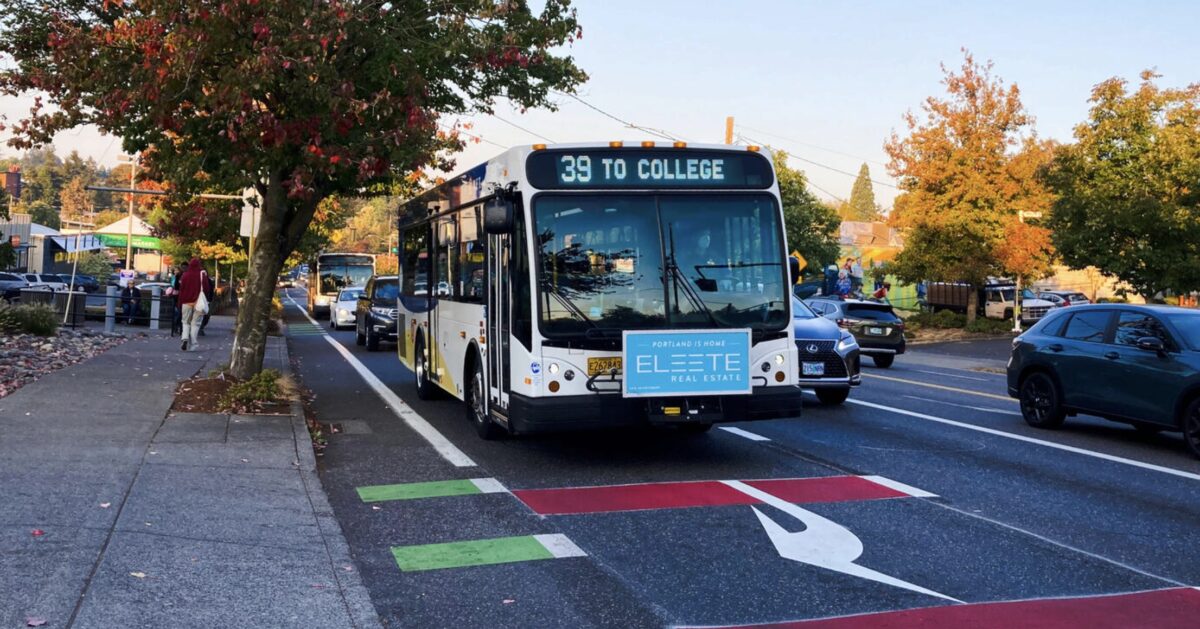
When the Portland Bureau of Transportation announced a plan to construct a ‘Rose Lane’ through the Hillsdale Shopping Center on SW Capitol Highway, the news wasn’t universally well-received. In fact, there was so much pushback from some Hillsdale community members that several organizations — the Hillsdale Business and Professional Association (HBPA), the Hillsdale Neighborhood Association (HNA), Southwest Trails PDX (SWT) and Southwest Neighborhoods Incorporated — launched a petition to delay the project.
Despite the backlash PBOT pushed ahead and constructed the bus-and-turn (BAT) only lane on a one-mile stretch of SW Capitol Hwy from Barbur Boulevard to Bertha Court last fall. So, now that the paint on the Rose Lane has been dry for some months, how’s Hillsdale faring? According to a new PBOT traffic data monitoring report, the impact doesn’t appear to be as dramatic as some people feared.
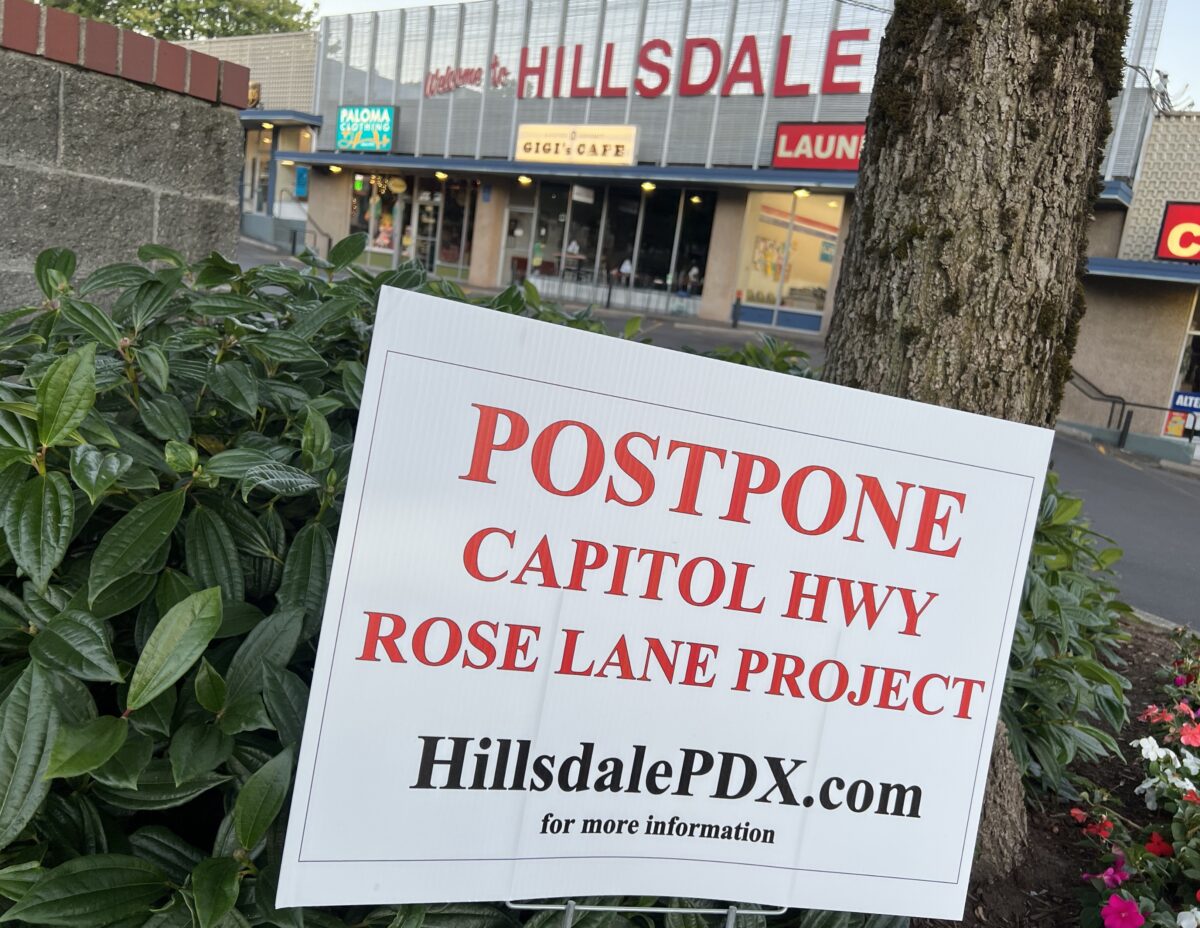
Hillsdale business owners and residents had a few concerns about this project. For one, some worried that the BAT lane would impact business access, and that its implementation would back up traffic in the area to such an extent that their shops would shut down “in a matter of months” (per the petition against the Rose Lane). People were also worried that the new traffic operations on Capitol Hwy would cause excessive traffic routing onto local neighborhood streets, and they argued that PBOT has made overstated assertions about how beneficial the Rose Lane would be for transit trip times on this corridor.
PBOT’s new report doesn’t comment on how well these local businesses are faring, but in December, BikePortland’s Lisa Caballero reported that Hillsdale businesses seemed to be doing quite well despite some claims to the contrary. The report does say that PBOT has “observed longer traffic queues, particularly during the PM Peak Hour westbound on SW Capitol Highway from SW Barbur to SW Sunset.” To remedy this, the bureau will be “advancing signal modifications to help mitigate this queuing.”
The report also states that local service streets only saw a minor uptick in both daily and peak hour vehicle volumes.
“Daily traffic volumes decreased on all monitored local streets except three, and those increases ranged between 25 and 31 additional vehicles per day…For local streets with increases of Peak Hour vehicle volumes, increases ranged between 3 and 14 additional vehicles during Peak Hours,” the report states. “While these changes are within expected standard fluctuations in daily volumes, we understand that people living on these streets may notice and feel a difference.”
Here are other takeaways from the report:
- There have been no significant changes in speeding, when comparing 85th percentile speeds on arterial streets or local streets.
- We have not observed changes to vehicle volumes or other patterns on arterials that trigger mitigation, but we will continue to monitor, collect data, and gather feedback from community stakeholders.
- While daily vehicle volumes on arterials were lower, all decreases are within expected seasonal fluctuations in daily volumes. Daily traffic volumes decreased on all monitored major streets, with total daily volumes decreasing between 2 percent and 12 percent. Lower traffic volumes on major streets are typical during winter months, and all observed decreases are below or within expected seasonal adjustment factors ranging from 10 percent to 15 percent.
- All local streets remain well below our preferred threshold of 1,000 vehicles per day, including streets that are not designated Neighborhood Greenways
PBOT says via the report they’ll work to reduce congestion with tools like signal timing and adjustments to lane markings. After these mitigation measures are completed, staff will go out for another round of data collection and release another report this summer.
The scope of this report didn’t include data about if the BAT lane is working to make transit trips faster — the ostensible purpose of the new bus lanes. The PBOT press release about the report states that “this project was designed to help buses bypass congestion on SW Capitol Highway, and it is expected to support bus speed and reliability as travel activity continues to grow into the future.” People who ride TriMet bus lines 39, 44, 45, 54, 56, 61, and 64 are all impacted by this project, but it’s unclear from the report if their travel times have been reduced.
When a project sets out to make non-car transportation faster, easier or more accessible, there may be some trade-offs for people driving cars, at least in the short-term. It would stand to reason that this is actually one of the main points of a project like this one: to encourage people to rethink their choice to drive single-occupancy vehicles.


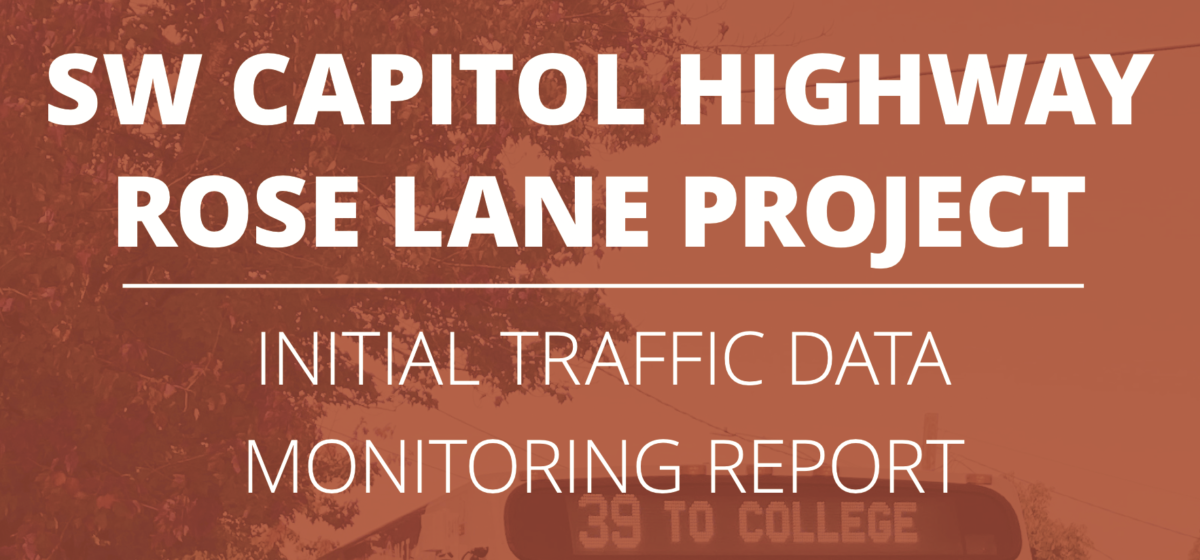
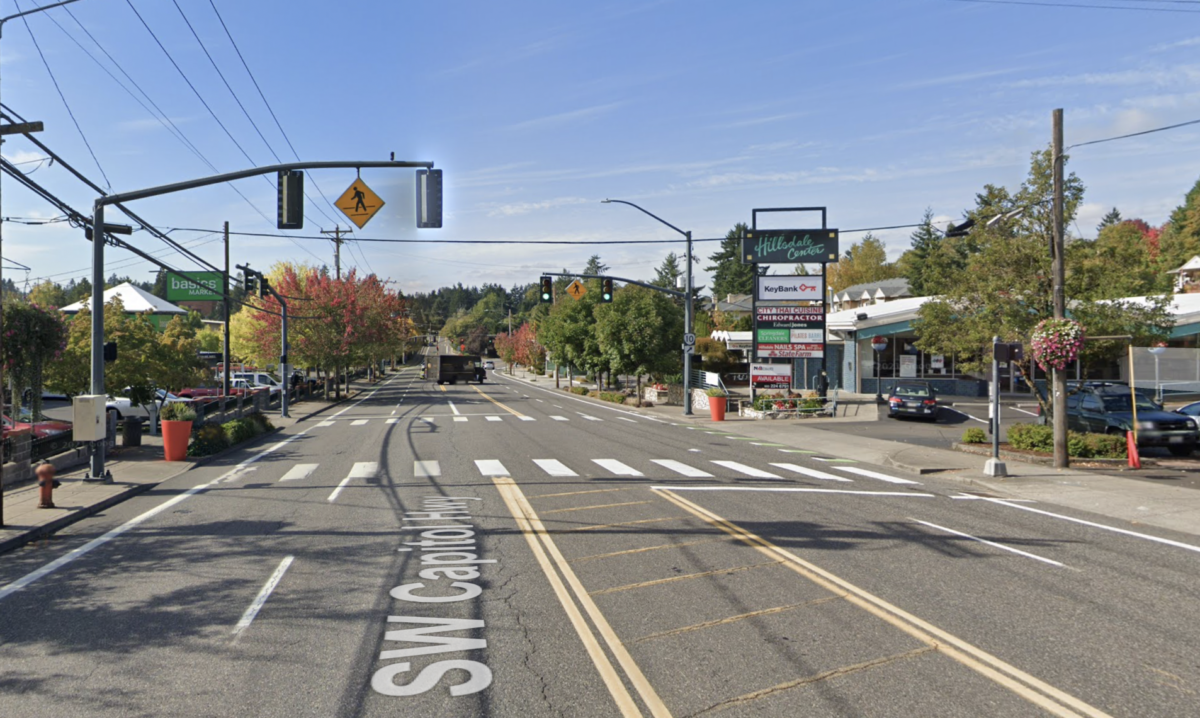
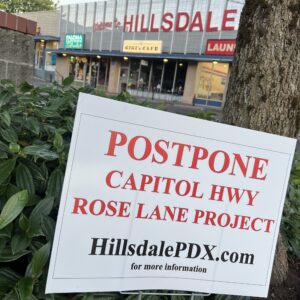
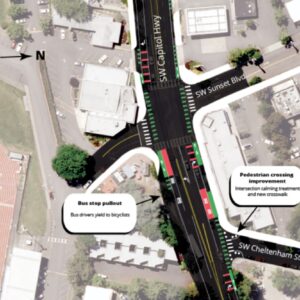
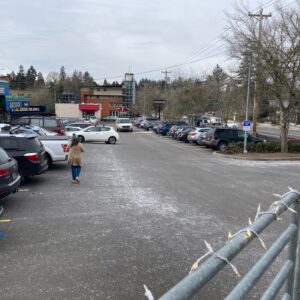
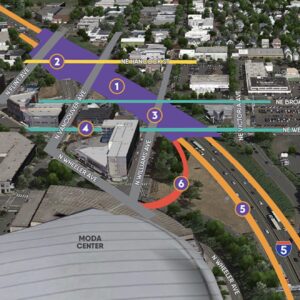
Thanks for reading.
BikePortland has served this community with independent community journalism since 2005. We rely on subscriptions from readers like you to survive. Your financial support is vital in keeping this valuable resource alive and well.
Please subscribe today to strengthen and expand our work.
A small bike benefit from these lanes is, in my experience, it has made connecting from Terwilliger to Beaverton-Hillsdale Hwy slightly calmer with most cars keeping out of the rose lane that starts up at Terwilliger. And makes biking in the rose lane to avoid the often gravel/leaves/tree limb shoulder/bike lane possible.
It’s a pretty big benefit in my view. The bus lanes have opened up the possibility of riding from Barbur to Hillsdale. The bike lanes on Capitol Hwy are super narrow and unmaintained requiring to be uncomfortably outside of the bike lane. The bus drivers are always super courteous in giving bikers plenty of room and theres not a constant stream of drivers going 40mph+ within a feet of you.
This is not a place you’d want to be outside of a car before the bus lanes
I’m biking through this intersection on my commute regularly (as well as for neighborhood errands). I find it so much more pleasant to bike here with the additional buffer of the bus lane. Especially right now, when the bikelane is still filled with gravel. Yes, there are the occasional car drivers who think they can use the whole length of the lane to turn right eventually, but for the most part is has been nice.
Yep – I too have noticed cars driving in the Rose Lane to the top of the hill and turning right into the high school. Would be nice to see some traffic enforcement – get the motorcycle cop from Multnomah Blvd to do some enforcement on Capitol Hwy.
As a regular rider of the 44 and 45 buses, I can report unequivocally that bus trips are faster since the rose lanes went in – sometimes 20-25 minutes faster from downtown during the afternoon commute, all b/c the bus no longer has to creep uphill in the traffic to Sunset. It’s a huge improvement and PBOT should be congratulated for doing something good here.
As other commenters have mentioned, the bike lane on the west side of Capitol Hwy, between Terwilliger and Sunset is a National Scandal: it’s about a foot deep in leaves, sticks, and trash. Thank goodness we can ride a bit in the rose lane now, knowing the bus drivers will look out for us.
Of course no businesses have gone belly-up since the rose lanes went in. Obviously that heated rhetoric was pure BS and I’m so glad PBOT disregarded it.
Overall the rose lanes in Hillsdale are a huge win!
This is my commute, and I can say it’s even pleasant for private vehicles. Cars no longer try to weave in between anes just to cut other people. Quite a solid win-win for all.
I love using the rose lanes when I’m on the bus. It has also made riding a bicycle and walking much nicer in Hillsdale. There needs to be more police enforcement, though.
I ride this stretch often with our kiddo in the bucket bike. It is SO MUCH better for people on bikes! Anyone that knows the terrible bike racks in front of Other Worlds Comics can appreciate this: in the first few weeks of the Rose Lane project I saw THREE bikes locked up there! I never saw bikes there before! When people feel safe walking and rolling they will leave the car at home!
Looking at Google Maps now, it shows Hillsdale as a “Busy Area” at 8pm on Friday night. Thank you PBOT for pushing this project through! We need more BOLD action on walk, roll, bike and transit projects to reduce VMT, vehicle emissions and traffic violence! More please!
I am appreciating these comments and agree with them all. As someone who has been pretty outspoken in favor of this project, and helped advocate for it through the BAC, I’m happy to have seen it implemented. As others have noted, the uphill bicycle lane from Barbur Blvd has not been maintained in months and I have used PDXReporter and two separate people in PBOT directly to no avail. That said, having the BAT lane as an option rather than being forced into a substandard and ill-maintained bicycle lane is much more pleasant. It should also be noted that the uphill lane through Hillsdale is in horrendous shape and completely unrideable in anything resembling a road bike. The current layer of gravel is the cherry on top.
Something I wish could have been in the report is a note about safety. While everyone opposing the project was bent out of shape about traffic being diverted the impact on safety, given how Vision Zero is supposed to be part of every project, would have been informative. Surely there should be some information on crashes, or even near misses with the monitoring that occurred, that could be referenced even if it’s unofficial.
It is disappointing that so many in SW have put up such a fight about something that, at worst, would have been net neutral. The project is aligned with city, regional, and state goals and the arguments from businesses and organizations were unimaginative and lazy. The parking lots for Hillsdale were hard to reach via car due to all of the travel lanes and there were transit delays on top of it all making it so it was hard for people to visit regardless of mode choice and this has made turning movements appear safer as there is less activity to worry about. By far the worst argument was about diversion, it was as if not a single person making that argument had ever looked at a map or driven a car through that part of SW – nothing is direct and the side roads are both quite narrow and not exactly smooth pavement. It was unsurprising to see that volumes were generally not impacted, as using a side road may keep you moving but would have little to no impact on travel time.
This project will also likely negatively impact SWIM as the amount of effort and political capital to get this implemented is going to have PBOT thinking twice the next time they want to do something in SW Portland. Hopefully this isn’t the case but it would be hard to fault them if it is.
RE: “This project will also likely negatively impact SWIM as the amount of effort and political capital to get this implemented is going to have PBOT thinking twice the next time they want to do something in SW Portland.”
I certainly hope not, but I’ll admit my reasons are personal, as I mentioned earlier. I’m currently trialing three cross-city public + active transit routes to get from NE Portland to SW Portland to visit family members. On the last leg of my bus trip, I’ll take 54 or 56, so I appreciate their frequent service.
And then I have a 1/2-mile walk. I’m a very experienced all-season walker, but I found yesterday on my trial #1 that I had to hug shoulders on SW 45th Ave. and SW Hamilton St. I also had to cross both streets on a few occasions to be safe. Why both streets don’t have sidewalks is beyond me, although Lisa’s ongoing SW reporting (thanks!) has helped me understand better.
FWIW, I had a similar experience last summer in SW Portland on a long walk from NE Portland to Beaverton. I had disastrous results, which Lisa chronicled.
And with that said, before I sign off of BP for a few months, I hope to see folks at the Sunday Parkways events this summer, especially in SW Portland.
I drove this in rush hour last friday, two private car drivers illegally took the bus lane and jumped right in front of me. After that, the two way cycle track that’s on the side of hwy 10 is an absolute disaster of gravel, dirt, treefall and other junk making miles of it absolutely unrideable. What’s worse is, I don’t even know to whom to complain about it.
I think PBOT is far too eager, in general, to “reduce congestion” by trying to move more cars. (Not unlike their approach to Hawthorne.) And far too dismissive of the impact of car traffic on narrow “greenway” streets which lack sidewalks or bike lanes. There are very few low-stress bike or walk trips here where someone could get to shopping, school, or the library without engaging in bodily conflict with car traffic. As usual, it seems that PBOT Engineers had never heard of Induced Demand or the idea that providing priority space to go by any mode besides driving might convince some people to try that. Other than the slightly increased comfort for biking (judging from the maintenance, that was not intentional) and ease of turning for drivers, they certainly aren’t serving local errand trips via bus in the bus lane, so residents just see more inconvenience and no more compelling options than driving. The bus lane itself is one step, but the lack of progress / effort / maintenance on the bike and walk network for the rest of SW is business as usual. How about that new sidewalk to nowhere on Custer (oops did we rename the park but not the street…) I think Safe Routes says kids can take the lane on no-sidewalks Capitol Hill Rd but PBOT insists on maintaining it with yellow centerlines.
The “outvoted” refers to being in the minority in the rose lane vote?